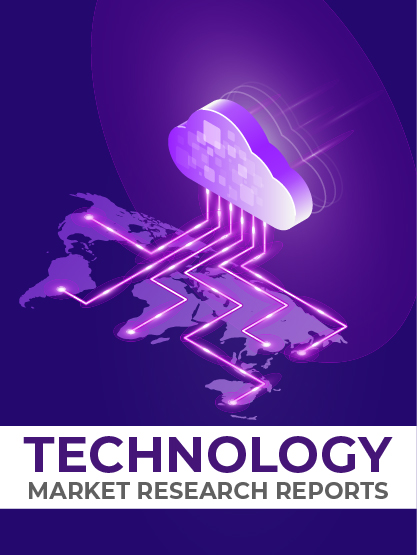
-
Report ID 138300 -
Published Date September 2024 -
Delivery Format PDF/PPT/Word -
Editor's Rating
-
Report Details
Report Overview
The worldwide market for AI Server is projected to grow from USD 31.2 billion in 2023 to approximately USD 430 billion by 2033, with a compound annual growth rate (CAGR) of 30.4% from 2024 to 2033.
AI servers are specialized systems designed to handle the demanding tasks associated with artificial intelligence applications, such as machine learning, deep learning, and data analysis. These servers are optimized for tasks that require high computational power and are equipped with advanced GPUs, high-speed storage solutions, and robust processing capabilities to manage large datasets and complex algorithms efficiently.
The demand for AI servers is surging due to the increasing adoption of AI technologies across various industries. As businesses strive to improve operational efficiencies and harness the power of big data, the need for powerful AI servers becomes essential. The rise in technologies such as natural language processing, image recognition, and automated decision-making systems further drives this demand, emphasizing the crucial role of AI servers in modern technological ecosystems.
The AI server market is experiencing robust growth, highlighted by its projected expansion from 2023 to 2033.T his growth is fueled by the ongoing digital transformation in sectors like healthcare, automotive, finance, and retail, where AI integration is becoming increasingly prevalent. Moreover, the continuous advancements in AI and machine learning algorithms necessitate more powerful and efficient server architectures, propelling the market forward.
However the market faces several hurdles such as AI servers require significant investment not only in initial hardware acquisition but also in maintenance and scaling. The specialized components, such as GPUs and high-speed networking equipment, can be prohibitively expensive, making it difficult for smaller organizations to adopt AI technology. To overcome these challenges, the Cloud computing can offer scalable AI server solutions without the need for substantial upfront investment in physical hardware. This can help organizations manage costs and scale operations more flexibly as their needs grow.
The market for AI servers presents numerous opportunities, particularly in the development of eco-friendly and energy-efficient server technologies. As the global emphasis on sustainability grows, companies are looking to invest in green AI technologies that reduce the environmental impact of data centers. Additionally, the expansion of AI applications in emerging markets offers significant opportunities for the deployment of AI servers, especially in areas with untapped technological potential.
According to a survey, AI servers constituted approximately 23% of the total market in 2023. IDC also projects that by 2027, AI server revenue will hit $49.1 billion, predicated on the expectation that revenue from GPU-accelerated servers will increase more rapidly than that from other types of accelerators.
As per the Communications Today report, the increasing demand for servers is having significant impacts across the industry. For instance, Super Micro Computer, Inc. (SMCI) is preparing to expand its capacity by acquiring more warehouses and increasing its rack-scale production to 5,000 units by the end of fiscal year 2024. Meanwhile, manufacturing giant Foxconn has set an ambitious target for its AI servers, aiming to make them the company’s next product to generate revenue in the trillion Taiwanese-dollar range.
Key Takeaways
- The global AI server market is expected to expand from USD 31.2 billion in 2023 to an estimated USD 430 billion by 2033, achieving a compound annual growth rate (CAGR) of 30.4% over the period from 2024 to 2033.
- In terms of server types, the AI training segment has captured the largest market share, holding 39% of the total in 2023.
- When categorized by hardware, the GPU segment dominated, accounting for 56% of the market share in 2023.
- Among industry sectors, the IT and telecom segment led with the highest market share, at 28% in 2023.
- Geographically, North America held the leading position, with the region comprising 33% of the market share in 2023.
Server Analysis
In 2023, the AI Training segment stood out prominently in the AI server market, commanding a significant portion with over 39% of the market share. This segment encompasses servers specifically designed to handle the heavy computational loads required for training AI models. These servers are typically equipped with advanced GPU architectures and extensive memory capabilities to manage the large datasets and complex algorithms inherent in AI training processes.
The dominance of the AI Training segment is driven by the increasing complexity and scale of AI applications across various industries, from automotive and healthcare to finance and retail. As AI technologies evolve, the need for more robust and efficient training servers grows. These servers must not only accommodate larger models but also offer the flexibility and scalability needed to support continuous advancements and iterations in AI development.
Moreover, the surge in demand for AI training servers is fueled by the push towards more personalized and context-aware AI applications, which require extensive training on diverse data sets to perform effectively. This trend is expected to persist as more organizations adopt AI-driven strategies to gain competitive advantages, further cementing the AI Training segment’s position in the market.
The strategic growth of AI Training segment is propelled by ongoing innovations in AI and machine learning technologies. As these technologies become integral to business operations and consumer products, the segment will likely see sustained investments from companies aiming to capitalize on the transformative potential of AI. This will ensure a vibrant and expanding market landscape for AI training servers well into the future.
Hardware Analysis
In 2023, the GPU (Graphics Processing Unit) segment secured a commanding lead in the AI server market, claiming over 56% of the total market share. GPUs have become pivotal in powering AI servers due to their superior ability to handle parallel processing tasks, which are essential for the complex computations required in AI applications such as machine learning and deep learning.
The prominence of GPUs in the AI server market can be attributed to their efficiency in accelerating the training and inference phases of AI models. These units significantly reduce the time it takes for AI systems to learn from data and make decisions, thus enhancing productivity and enabling more rapid deployment of AI technologies across various sectors. This efficiency is particularly crucial in industries like autonomous driving, healthcare for medical imaging, and financial services where real-time data processing and decision-making are essential.
The growth in the GPU segment is also supported by continuous advancements in GPU technology, with major players in the industry regularly introducing more powerful and energy-efficient models. These innovations help address the increasing demands for handling larger datasets and more complex AI tasks, making GPUs an even more attractive option for businesses looking to invest in AI infrastructure.
Looking ahead, the GPU segment is expected to maintain its dominance in the AI server market as the demand for high-performance computing continues to rise. The ongoing development of more sophisticated AI applications will likely spur further growth in this segment, ensuring that GPUs remain at the forefront of AI server hardware choices well into the future.
Industry Analysis
The IT & Telecom sector secured a major presence in the AI server market in 2023, capturing a 28% market share. This significant share underscores the crucial role AI servers play, particularly as IT and telecom companies increasingly deploy advanced AI to manage large data volumes, enhance network reliability, and offer personalized services. The integration of AI technologies not only streamlines operations but also reduces downtime, establishing AI servers as an indispensable part of their infrastructure.
AI servers in the IT & Telecom sector are primarily used to support complex machine learning algorithms and manage substantial datasets that are inherent to modern telecom operations. These servers facilitate the real-time processing of data, crucial for maintaining the efficiency of network operations and the delivery of content at breakneck speeds. Furthermore, AI-driven servers assist in predictive maintenance, which preemptively identifies potential network failures, thereby saving costs and enhancing service reliability.
The demand in this market segment is also driven by the growing need for AI to handle cybersecurity threats, which are becoming more sophisticated. Telecom networks are prime targets for cyber attacks due to the sensitive data they carry. AI servers provide advanced threat detection and response systems that are faster and more efficient than traditional methods, thereby bolstering the security framework of IT and Telecom services.
Overall, the strong performance of the IT & Telecom segment in the AI server market is indicative of the broader trend towards digital transformation within the industry. As companies continue to innovate and push the boundaries of what’s possible with AI technology, the role of AI servers is set to become even more central, promising continued growth and expansion of this market segment.
Key Market Segments
By Server Type
- AI Data
- AI Training
- AI Inference
- Others
By Hardware Type
- GPU
- ASIC
- FPGA
- Others
By Industry Type
- IT & Telecom
- BFSI
- Retail
- Healthcare
- Manufacturing
- Others
Market Dynamics
Drivers: Growing Demand for AI-based Solutions
One significant driver propelling the AI server market is the escalating demand for AI-based solutions across various industries. This surge is primarily fueled by the increasing sophistication and integration of artificial intelligence in sectors such as healthcare, automotive, finance, and retail. AI servers play a crucial role in processing the extensive data required for AI applications, from real-time analytics to complex machine learning models.
As industries continue to realize the potential of AI to optimize operations, enhance customer experiences, and innovate product offerings, the demand for robust AI servers that can handle complex computations and vast datasets grows correspondingly. This demand ensures a steady market expansion, emphasizing the servers’ essential role in the technological infrastructure of modern enterprises.
Restraints: High Upfront Costs and Integration Challenges
One of the major restraints in the AI server market is the high upfront costs associated with acquiring and implementing these advanced systems. AI servers require specialized hardware such as GPUs, TPUs, or other accelerators to manage complex AI and deep learning workloads, making them significantly more expensive than traditional servers. For many small- to medium-sized businesses, these costs can be prohibitive, preventing them from fully adopting AI technologies despite the potential benefits.
In addition to the high costs of purchasing hardware, there are also substantial expenses related to integrating AI servers into an existing IT infrastructure. Many businesses face challenges in aligning AI servers with their legacy systems, which may not be compatible with the new hardware and software requirements.
Furthermore, AI systems frequently handle sensitive data, which raises concerns about data privacy and security. Organizations must ensure that their AI servers comply with stringent data protection regulations, such as GDPR, and implement robust security measures to protect against cyber threats.
Opportunities: Expansion of AI in Edge Computing
A major opportunity for growth in the AI server market lies in the increasing use of AI in edge computing. Traditionally, AI computations have been performed in centralized cloud environments, but as real-time data processing becomes more critical for applications like autonomous vehicles, smart cities, and industrial IoT (Internet of Things), there is a growing need for AI servers that can perform computations closer to the data source.
Edge AI servers are designed to handle data processing tasks on the edge of networks, reducing latency and bandwidth requirements by processing information locally rather than relying on distant cloud data centers. This capability is essential for applications where split-second decision-making is required, such as in autonomous driving or real-time video analytics.
The growing deployment of AI at the edge is also aligned with the increasing adoption of 5G networks. As 5G networks enable faster data transmission speeds and lower latency, they complement edge AI solutions, allowing businesses to deploy AI-driven applications across a broader range of industries. This trend is expected to drive significant demand for AI servers optimized for edge computing, opening up new avenues for growth.
Challenges: Rapid Technological Changes
The AI server market faces the challenge of keeping pace with rapid technological advancements. The speed at which new technologies are developed and implemented can outstrip the ability of organizations to adapt, leading to potential mismatches between current system capabilities and the demands of new AI applications. Also, integrating AI servers into existing IT infrastructure can be complex and may require significant changes to systems and processes.
Additionally, the ongoing innovation in AI algorithms and computing hardware requires continual updates and upgrades to AI server infrastructures, which can be both costly and resource-intensive. Staying current with these changes is essential for companies to remain competitive, but it also poses a significant challenge in terms of investment and adaptability.
Latest Trends
- Edge AI Integration: As the demand for real-time data processing and analytics increases, there’s a growing trend towards integrating AI capabilities directly into edge devices. This shift reduces latency, enhances data privacy, and decreases bandwidth usage by processing data locally on AI servers situated at the edge of networks. It’s especially relevant in sectors like manufacturing, automotive, and healthcare, where immediate data processing is critical.
- Hybrid Cloud Environments: The adoption of hybrid cloud architectures is on the rise, where AI servers are being deployed both on-premises and in the cloud to leverage the strengths of both environments. This approach offers flexibility, scalability, and more efficient data management, allowing businesses to balance cost, performance, and security more effectively.
- AI-as-a-Service (AIaaS): AIaaS is becoming a popular model as it allows companies to access AI tools and server capabilities without the high upfront costs associated with setting up dedicated AI servers. This trend is democratizing access to advanced AI technologies, enabling small and medium-sized enterprises to innovate and compete at higher levels.
- Green AI Technologies: Energy consumption remains a significant concern with AI servers due to their high power requirements. There’s an increasing focus on developing more energy-efficient AI servers and implementing green AI technologies that minimize environmental impact while maximizing computational power.
- Advanced Neural Network Architectures: AI servers are being optimized to handle more complex neural network architectures like Transformers, which are used in advanced natural language processing tasks. These optimizations help in managing the increasing computational demands of training and running large models, enhancing the speed and efficiency of AI applications.
Top 5 Use Cases
- Autonomous Vehicles: AI servers play a critical role in the development and operation of autonomous vehicles. They process vast amounts of data from sensors and cameras in real time, enabling vehicles to make instantaneous decisions about navigation, safety, and traffic management. This requires immense computational power and low-latency response times, which AI servers are uniquely equipped to provide.
- Healthcare Diagnostics: In the healthcare sector, AI servers are used to analyze medical images, genetic information, and clinical data to assist in diagnostics and treatment planning. For instance, AI-driven servers can quickly process and interpret complex medical imagery to identify patterns that may not be evident to human eyes, enhancing the accuracy and speed of diagnoses.
- Financial Services: AI servers enable financial institutions to perform high-frequency trading, risk assessment, and fraud detection with greater accuracy and efficiency. They process large datasets to identify trends and patterns, helping companies make informed decisions quickly. Additionally, AI servers facilitate personalized banking services through predictive analytics, improving customer satisfaction and engagement.
- Retail and E-commerce: In retail, AI servers enhance customer experiences through personalized recommendations and virtual shopping assistants. They analyze customer data and shopping behaviors to predict preferences and suggest products, which helps retailers increase sales and customer loyalty. AI servers also optimize inventory management and logistics, reducing costs and improving efficiency.
- Smart Cities: AI servers are integral to the development of smart city infrastructures, where they process data from IoT devices to manage traffic, public transportation, energy usage, and public safety. For example, AI servers can analyze traffic flow data to optimize signal timings and reduce congestion, or monitor energy consumption patterns to improve grid stability and efficiency.
Regional Analysis
North America established itself as the leader in the global AI server market in year 2023, capturing a 33% market share. This dominance is underpinned by several key factors that have significantly driven regional demand for AI servers. The prevalence of tech giants and startups alike in regions such as Silicon Valley and Seattle, which are heavily invested in AI technologies, contributes largely to this substantial market uptake. These companies continually seek advanced AI server capabilities to handle large-scale AI tasks, including machine learning, deep learning, and data processing at unprecedented scales.
Additionally, North America’s robust infrastructure for technological innovation, coupled with supportive government policies promoting AI research and applications, further fortifies its leading position. Universities and research institutions across the U.S. and Canada are pivotal in advancing AI technology, often in collaboration with industry leaders. This synergy not only fuels technological advancements but also ensures a steady demand for AI servers necessary to support intensive computational work.
The Asia Pacific region is poised to witness the highest Compound Annual Growth Rate (CAGR) in the AI server market, driven by rapid technological advancements and increasing digitalization across various sectors. This surge is largely fueled by the expansive growth of industries in countries like China, India, Japan and South Korea in field of e-commerce, automotive and manufacturing, which are increasingly integrating AI technologies to optimize operations and enhance decision-making processes.
As more businesses in the Asia Pacific region recognize the value of data analytics and machine learning, the demand for AI servers is expected to grow exponentially. This trend is anticipated to not only keep pace but accelerate, as technological penetration deepens and local companies scale up their AI capabilities, driving the Asia Pacific market towards remarkable growth rates in the coming years.
Key Regions and Countries
North America
- US
- Canada
Europe
- Germany
- France
- The UK
- Spain
- Italy
- Russia
- Netherlands
- Rest of Europe
Asia Pacific
- China
- Japan
- South Korea
- India
- Australia
- Singapore
- Thailand
- Vietnam
- Rest of APAC
Latin America
- Brazil
- Mexico
- Rest of Latin America
Middle East & Africa
- South Africa
- Saudi Arabia
- UAE
- Rest of MEA
In the AI server market, several key players are making significant contributions to its growth and innovation. NVIDIA Corporation stands out for its expertise in creating powerful GPU servers that are essential for processing complex AI tasks. Their products are widely used in industries that require high-speed data processing and real-time analytics, making NVIDIA a leader in the field.
ADLink Technologies is a key player in the AI server market, known for its innovative solutions that power a range of industries including healthcare, manufacturing, and transportation. They focus on creating robust server platforms that support advanced AI applications, making it easier for businesses to implement complex AI tasks. ADLink’s commitment to reliability and performance in server technology helps organizations leverage the power of AI to drive efficiency and innovation.
Dell Technologies stands out in the AI server market for its comprehensive range of server solutions tailored to meet the needs of large enterprises and small businesses alike. Their servers are designed to handle intensive AI processes, such as machine learning and big data analytics, with ease. Dell’s global presence and established reputation in providing scalable and secure IT infrastructure make it a go-to choice for companies looking to integrate AI into their operations.
Hewlett Packard Enterprise (HPE) is another major influencer in the AI server market. HPE offers cutting-edge server technology that is specifically optimized for AI workloads, enabling faster and more efficient data processing. This is crucial for businesses that rely on real-time AI applications. HPE’s focus on developing eco-friendly and energy-efficient server solutions also appeals to organizations that prioritize sustainability alongside technological advancement.
Top Key Players in the Market
- ADLink Technologies
- Dell Technologies
- Hewlett Packard Enterprise
- Huawei Technologies
- IBM Corporation
- NVIDIA Corporation
- Aivres
- Super Micro Computer, Inc.
- ZTE Corporation
- Other Key Players
Recent Developments
- NVIDIA Corporation (November 2023): NVIDIA announced the integration of its Spectrum-X Ethernet networking technologies into AI server lineups from Dell Technologies, Hewlett Packard Enterprise (HPE), and Lenovo. These new systems, expected to be available in early 2024, are designed to accelerate generative AI workloads. This collaboration represents a significant step in the development of advanced AI infrastructure.
- Dell Technologies (July 2023 – March 2024): Dell has been actively expanding its AI offerings to include the Dell AI Factory with NVIDIA, an end-to-end AI enterprise solution. This includes new PowerEdge servers equipped with NVIDIA’s latest GPUs, designed to improve AI inference performance. Additionally, Dell launched several new AI solutions focused on generative AI, model training, and data security, with various components becoming available between July 2023 and March 2024.
- Hewlett Packard Enterprise (June 2024): HPE introduced several new AI server models in collaboration with NVIDIA, including the HPE Cray XD670 and ProLiant DL384 Gen12 servers. These servers are optimized for large language models (LLMs) and generative AI workloads, utilizing the latest NVIDIA GPUs. The new systems are expected to be generally available in the fall of 2024.
-
Table Of Content
Research Insights & Deliverables
 Development and Future Forecast
Development and Future Forecast Competitive benchmarking
Competitive benchmarking Company Revenue Statistics
Company Revenue Statistics Rising Regional Opportunities
Rising Regional Opportunities Technology Trends and Dynamics
Technology Trends and Dynamics Technology Assessment
Technology Assessment
-
Inquiry Before Buying
Research Insights & Deliverables
 Development and Future Forecast
Development and Future Forecast Competitive benchmarking
Competitive benchmarking Company Revenue Statistics
Company Revenue Statistics Rising Regional Opportunities
Rising Regional Opportunities Technology Trends and Dynamics
Technology Trends and Dynamics Technology Assessment
Technology Assessment
-
Request Sample
Research Insights & Deliverables
 Development and Future Forecast
Development and Future Forecast Competitive benchmarking
Competitive benchmarking Company Revenue Statistics
Company Revenue Statistics Rising Regional Opportunities
Rising Regional Opportunities Technology Trends and Dynamics
Technology Trends and Dynamics Technology Assessment
Technology Assessment














